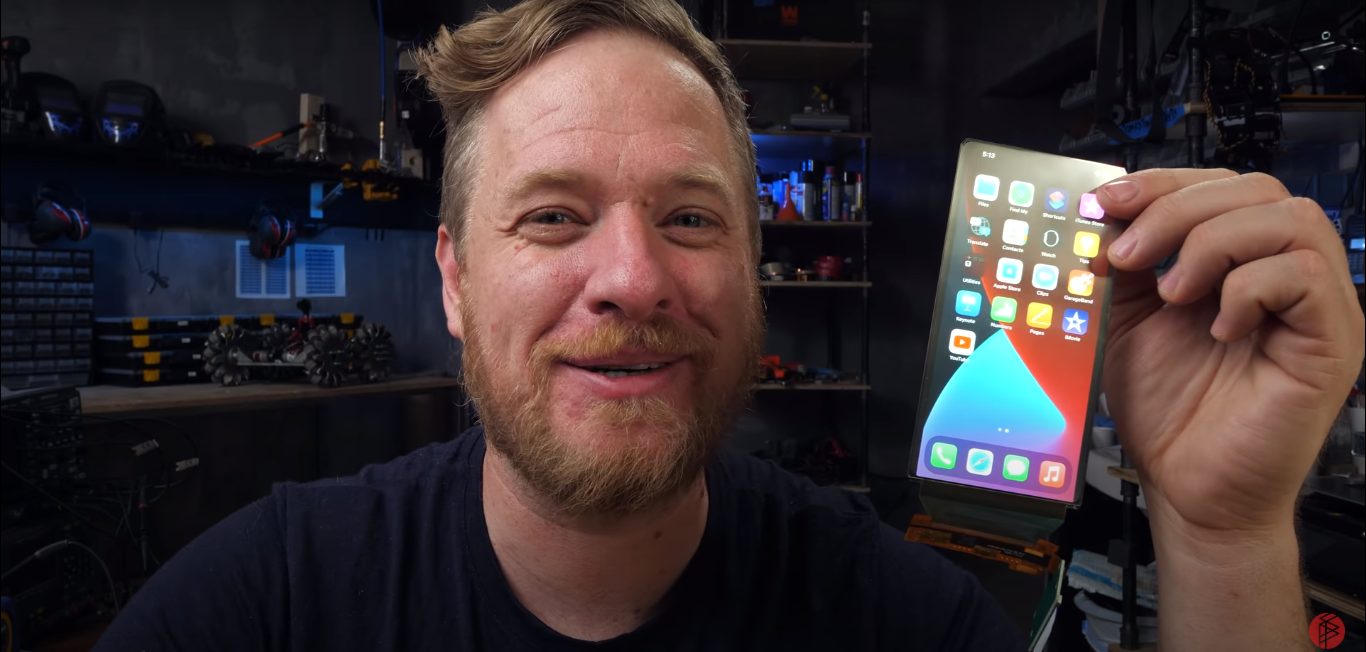There have been many rumors regarding Apple’s foldable iPhone these past few months. Previously it was reported that LG Display will assist Apple with foldable iPhone development and that Apple will be using periscope lenses on the 2021 iPhone lineup, which will be sourced from Samsung.
Now a YouTuber named Strange Parts created a foldable iPhone. For the project, his setup utilized Raspberry Pi to get iOS onto a couple of folding displays.

YouTuber uses Raspberry Pi with folding glass to show what a foldable iPhone could look like
Scotty from the YouTube channel Strange Parts posted a video in which he explained his journey of how he thought of creating his own iPhone and his struggle in not being able to load iOS on the Raspberry Pi properly. In order to visualize the folding iPhone’s appearance, he loaded the Raspberry Pi with RPiPlay which adds AirPlay functionality to the Raspberry Pi.
So what’s involved in trying to make my own folding iPhone? First, I got to find a screen that is both flexible enough and has a built in digitizer, which I have not found yet. Second, I need to figure out how to get the iPhone logic board to talk to the display. And the good news there is that they both likely speak the same protocol, which is MIPI DSI.
MIPI (Mobile Industry Processor Interface) is a collection of standards. MIPI defines how the data is sent between the phone and the screen but does not define a standard connector, not even a full set of commands for configuring the display.

Scotty mirrored his iPhone’s screen via AirPlay to the Raspberry Pi to provide a good look at a folding iPhone. In his video, Scotty mentions that he got two foldable displays from Ali Express for $500. One of the screens which had more flexibility was thinner, and the other one was quite thick but it carried a digitizer, better contrast, improved resolution, etc.
Scotty says that he needs to make an adapter board of sorts to go between the iPhone logic board and the screen. Unfortunately, he does not have open documentation to further proceed with that, nor he has good data sheets for any of the screens that explain what configuration commands to send them. Moreover, iOS is a closed source.
In spite of all that, Scotty says that he is already working on a ‘functioning’ foldable iPhone prototype with a folding screen attached. He has consulted a friend of his, who is a “far better hardware hacker” to see if the project itself is possible. If the go-ahead is given, Scotty would need to find a flexible screen with a digitizer, an adapter to go between the flexible screen and iPhone logic board. And because he is doing this himself, he will need to create a custom frame to hold everything together.
Scotty acknowledges that this will not be an easy task, but credits for the effort and ambition. Scotty possesses skill and persistence when it comes to DIY projects like this, back in 2017 he was able to build his own iPhone from recycled parts.
Read More:
1 comment